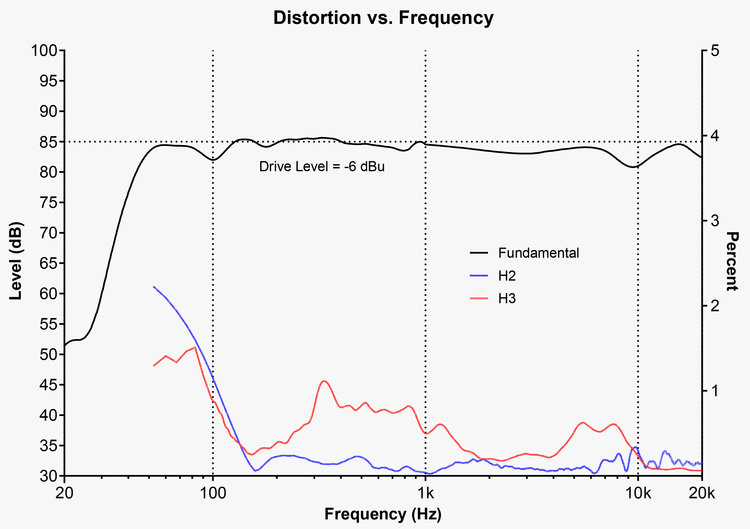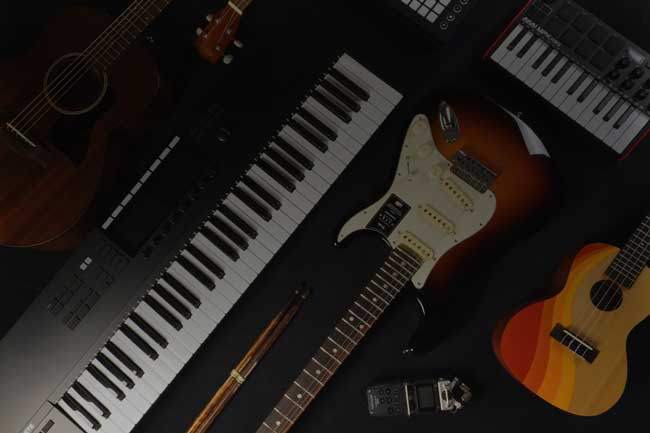Transparent Sound
The Lone Pine Series is designed to allow you to hear every detail that's happening in your mix.
This starts with an exceptionally accurate frequency response. Whatever is present on your mix is what you'll hear in these monitors. Nothing is boosted or suppressed to cover flaws or try to sound more pleasing.
With the LP-6 and LP-8, you can mix with more confidence, and you can also be assured that your mix will translate as best as possible to whatever systems your audience is using.
3-D Imaging Waveguide
The waveguide on Project Lone Pine monitors allows you to hear spatial details and a soundstage that is wider, taller, and deeper than the space between the speakers themselves.
Every time you hear a loudspeaker, you're hearing both the direct sound from the speaker, and reflections from the speaker's signal bouncing off of objects in the room.
When those reflections are congruent with the direct sound from the speaker, listeners perceive a better sound overall, and are able to make out very subtle details like where microphones are placed in a room.
When done very well, the stereo image will be three-dimensional, representing a sound stage that is wider, deeper, and taller than the speakers themselves.
This gives you a very high degree of confidence in your mix. It allows you to mix faster, and produce better mixes overall.
Low Noise Port Tube
The LP-6 and LP-8 both have the clean, punchy bass of a front-ported speaker with very low noise from the port tube.
On most port tubes, air leaves at different speeds from different points of the opening, creating noisy turbulence. This turbulence can be heard as "chuffing," or an audible air sound coming from the monitor. This sound will add to the noise floor and obscure the details of the low end.
The port tube on LP-6 was designed to ensure that all of the air leaves the port tube at the same velocity. This helps add to the low end response of the speaker, while keeping the bass clean, tight, and devoid of extra noise.
Flat Frequency Response
The LP-Series monitors are very accurate throughout their frequency response. The measurements you see were conducted by Pro Sound Testing in Greenville, IN.

High dynamic range, low distortion
“Dynamic range” refers to the differences between the quietest quiets and the loudest louds a speaker can play. When people talk about “clarity,” “detail,” or “depth” that they hear from a speaker, they are often talking about dynamic range. A monitor with greater dynamic range will be easier to mix on, as details will be easier to hear. It will also sound much more natural, and be nicer to work on for a long period of time.
In addition to high dynamic range, a speaker with low distortion will also present the sound in more detail and with greater clarity. Both the LP-6 and LP-8 are exemplary for their low distortion. Distortion in the LP-6 is a full 6 dB lower than that of the nearest competitor. System THD (Total Harmonic Distortion) for the LP-6 is less than 3% below 1700 Hz, and the LP-8 is a bit better at 2.5% below 400 Hz.
The dual layer, large diameter voice coil on the LP-Series helps keep the sound clear and free of distortion.
The LP-6 has the lowest distortion in its class; a full 6 dB lower than its nearest competitor. This is achieved via design considerations that optimize woofer performance. Like our frequency response data, this data was collected by Pro Sound Testing in Greenville, IN.
The LP-8 is even better, with 3 dB greater dynamic range! The graphic above is a bit of an exaggeration, but it helps to illustrate the point about how much more information is conveyed by a speaker with better dynamic range. In addition to its lower distortion, this high dynamic range makes the LP-8 sound clearer and more detailed overall.

Listening Distance
Kali Audio defines Maximum Listening Distance for a studio monitor as the maximum distance at which the monitor can play at 85 dB continuously, with 20 dB of dynamic headroom to allow for peaks in the program material. 82 db - 85 dB is the generally accepted threshold at which long periods of exposure can be damaging to hearing. 20 dB of headroom ensures that louder sections of program material still come through without the loudspeaker distorting.
The LP-6 has a Maximum Listening Distance of 2.2 Meters, and the LP-8 has a Maximum Listening Distance of 2.8 Meters. So for larger rooms, the LP-8 is the better choice.
High Output
At continuous reference-level output, the LP-Series monitors have at least 20 dB headroom at the listening position. The LP-6 has enough output for most 1-2 person setups, and LP-8 can handle larger setups easily.
Ample headroom ensures that even loud mixes with high dynamic range will come through clearly.
Bass Response and Output
A lot of loudspeaker manufacturers make different sizes of loudspeakers that sound vastly different. In the graphic below, we have frequency responses for three different sizes of speaker from a trusted competitor.
Bass on the LP-Series monitors is delivered by larger magnets and larger voice coils than any comparable speakers on the market. This gives you more accurate bass response that extends lower, so you can dial in exactly the low end sound you need.
Notice that the 8” speaker has more bass response, but mid-range response between the three speakers is largely equal, with the smaller speakers each being LOUDER than the larger ones between 700 Hz and 1.2 kHz. The smaller speakers will sound more mid-forward and the larger speakers will sound comparatively tubby.

This trend towards smaller speakers that are more mid-range heavy, and larger speakers that are more bass heavy is a common one. If you’ve ever heard that a small speaker sounds sweeter or more immediate, it probably has a lot to do with this trend.
Notice that this is not the case between the LP-6 and the LP-8. Kali designed both speakers for accuracy, and so they sound very much like each other. Rather than using a larger woofer to make the LP-8 a lot louder and/or a lot bassier than the LP-6, we’ve made them sound more or less the same, so that we can get more positive benefits out of the LP-8.
Nevertheless, the LP-8 does play a bit louder and a bit lower. So if you need extra volume, or if you’re mixing a bass-heavy genre like Hip-Hop or EDM, you might be better off with the LP-8.
Budget and Space Limitations
If you’ve read this whole article, you’ve probably figured out by now that the LP-8 is the superior speaker, and is a better choice in most circumstances. However, it is quite a bit more expensive and quite a bit larger than the LP-6. A pair of LP-6 is just under $300 in the United States, whereas a pair of LP-8 is nearly $500.
You also might not be able to fit the larger LP-8 on a small desk. Here’s a look at how the sizes compare side-by-side:

What about the size of my room?
All rooms are subject to a phenomenon called room modes, where bass builds up in certain parts of the room, and cancels in other parts of the room. Room modes can make it hard to make critical decisions about the bass in your mix. This phenomenon can be particularly bad in small rooms, and many people choose to use smaller speakers in these rooms. The thought is that, because the smaller speaker doesn’t play as low, it will be less likely to excite room modes and overwhelm the room with bass.
Because the LP-6 and LP-8 are so close in frequency response, there is little cause for concern here. Further, room modes can be mitigated with clever placement of the loudspeakers, or acoustic treatments that target problematic frequencies.
The LP-Series loudspeakers’ waveguides actually make them a particularly good choice for smaller rooms! Lateral reflections from nearby walls will help to enhance the stereo image, giving you a much more precise “view” of the mix you’re working on.
Boundary EQ Control
A speaker's given position in a space can drastically change it's frequency response. A speaker placed against a wall or on a desk will sound very different than a speaker placed on a stand, even in a well-treated space. Hard surfaces like walls, desk tops, and recording consoles can change the low end frequency response of the monitor, and degrade the overall clarity of the sound.
Happily, most of the common positions are fairly predictable and easily corrected.
Kali's team did our Boundary EQ tuning at The Village Studios in Los Angeles, and came up with boundary compensation EQ settings to help you get the optimum sound for where you need to put your speakers. Combined with the LF and HF trims, this will ensure that the speakers sound their best no matter what room you're mixing in, or where the speakers are placed.
Easy Connections
The LP-6 and LP-8 both feature balanced XLR and TRS inputs, and an unbalanced RCA input.
The RCA input can be set to -10 dBu sensitivity when you're using consumer devices like a laptop or smartphone's headphone jack.
Class D Power
The integrated Class D Power amp delivers clean, reliable power that's optimized to this speaker.
Both models use 40W for the 1” soft dome tweeter. The LP-6 uses 40W for the 6.5-Inch woofer, and the LP-8 uses 60W for the 8-Inch woofer.











